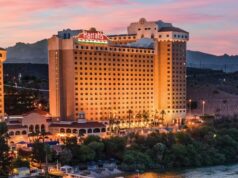Throughout 2005 we all heard the news of oil prices lingering above $50 a barrel and gasoline exceeding $3.00 a gallon. For long-term lodging industry participants, vivid memories of the gas lines and high inflation of the 1970s resurfaced. Understandingly, hotel owners and operators feared that a falloff in travel would cause occupancy to decline, and rising utility costs would kill profits.
Looking back at 2005, it appears that the U.S. lodging industry was able to withstand the spike in energy costs. By year-end 2005, PKF Hospitality Research (PKF-HR) estimates that U.S. hotels enjoyed significant increases in demand that led to increasing occupancy and record growth in profits.
Great Growth
Based on input from several hotel companies, PKF-HR estimates that the typical hotel in the United States spent 12 percent more on utility costs in 2005 versus 2004. This is the largest single year increase in utility costs since 1981 when energy expenses rose 17.1 percent. During the year, full-service hotels endured a slightly greater increase (13 percent) compared to limited-service properties (11 percent).
Fortunately for U.S. hotels, tremendous gains in revenue helped to absorb the rise in utility costs. During 2005, U.S. hotels were able to raise their total revenues by an estimated 10.5 percent. Like the growth in energy costs, the 10.5 percent gain in total revenues is the greatest seen in more than 20 years.
For reference purposes, hotel utility costs increased an average of 14.2 percent per year during the energy crisis of the late 1970s. Luckily, total hotel revenues averaged a healthy annual increase of 11.4 percent during that same period, thus limiting the impact on profitability to some degree.
The ability of hotels to tolerate rising energy costs becomes evident when analyzing utility expenses as a percent of total revenues. From 1970 through 2005, hotel utility expenses have averaged 4.2 percent of total revenue. During this same period, this ratio has rarely deviated more than one percentage point from the long-term average.
Of course, you can’t take percentages to the bank. The real impact should be measured based on the potential profit dollars lost. In 2005, a one percentage point change in growth of utility costs would have translated into a savings (or loss) of approximately $17 per available room in profits. For a 500-room hotel, the six percentage point increase in the growth rate for utility costs from 2004 to 2005 translates into an estimated $51,000 cut on the bottom line.
Indirect Impacts
When analyzing the effect of rising energy prices on the hotel industry, PKF-HR breaks it down into direct impacts and indirect impacts. The direct impact on hotels is the rising utility bills previously discussed. The indirect impacts surface with the potential that rising gas prices may have a negative affect on consumer travel patterns, as well as the cost of goods purchased by hotels.
On a good note, data from the Travel Industry Assn. indicates that gas prices did not cause a decline in the number of trips taken by Americans in 2005. For the year, domestic leisure travel increased by 4 percent, while business travel grew 1 percent. For hotels in the nation’s major markets, this translated into a 4.7 percent rise in lodging demand, or a 3.4 percent increase in occupancy.
An increase in operating expenses is where we did observe a negative impact on hotels. Total hotel operating expenses, excluding labor and utility costs, increased an estimated 6.8 percent in 2005. This is more than twice the pace of inflation. We have heard from several hotel operators that vendors added fuel surcharges to their invoices in 2005, thus exacerbating increases in the cost of goods, supplies, and services purchased by hotels.
Less Cost Cover In 2006
The Winter 2006 “Hotel Outlook” report prepared by PKF-HR and Torto Wheaton Research projects a slowdown in the pace of revenue growth for U.S. hotels in the nation’s largest cities. The 4 percent forecast of RevPAR growth for 2006 is more than half the 11.2 percent increase in RevPAR enjoyed during 2005. With rooms revenue comprising approximately 65 percent of the total revenue for the typical U.S. hotel, it can be assumed that total hotel revenue growth will also slow down dramatically in 2006.
Unfortunately for hotel owners and operators, it does not appear that the energy costs will decelerate to the same degree as hotel revenues in 2006. Forecasts prepared by the Energy Information System show cost increases in heating oil and natural gas of approximately 12.5 percent for the year. The good news is that this is roughly half the pace of 25.3 percent growth exhibited by these energy sources in 2005. From this data, we can deduce that the pace of growth for hotel utility costs will also decline in 2006. However, the growth in hotel utility costs will most likely continue to be greater than the growth in hotel revenues.
Robert Mandelbaum is the Director of Research Information Services for PKF Hospitality Research. He is located in the firm’s Atlanta office and can be reached at robert.mandelbaum@pkfc.com.






